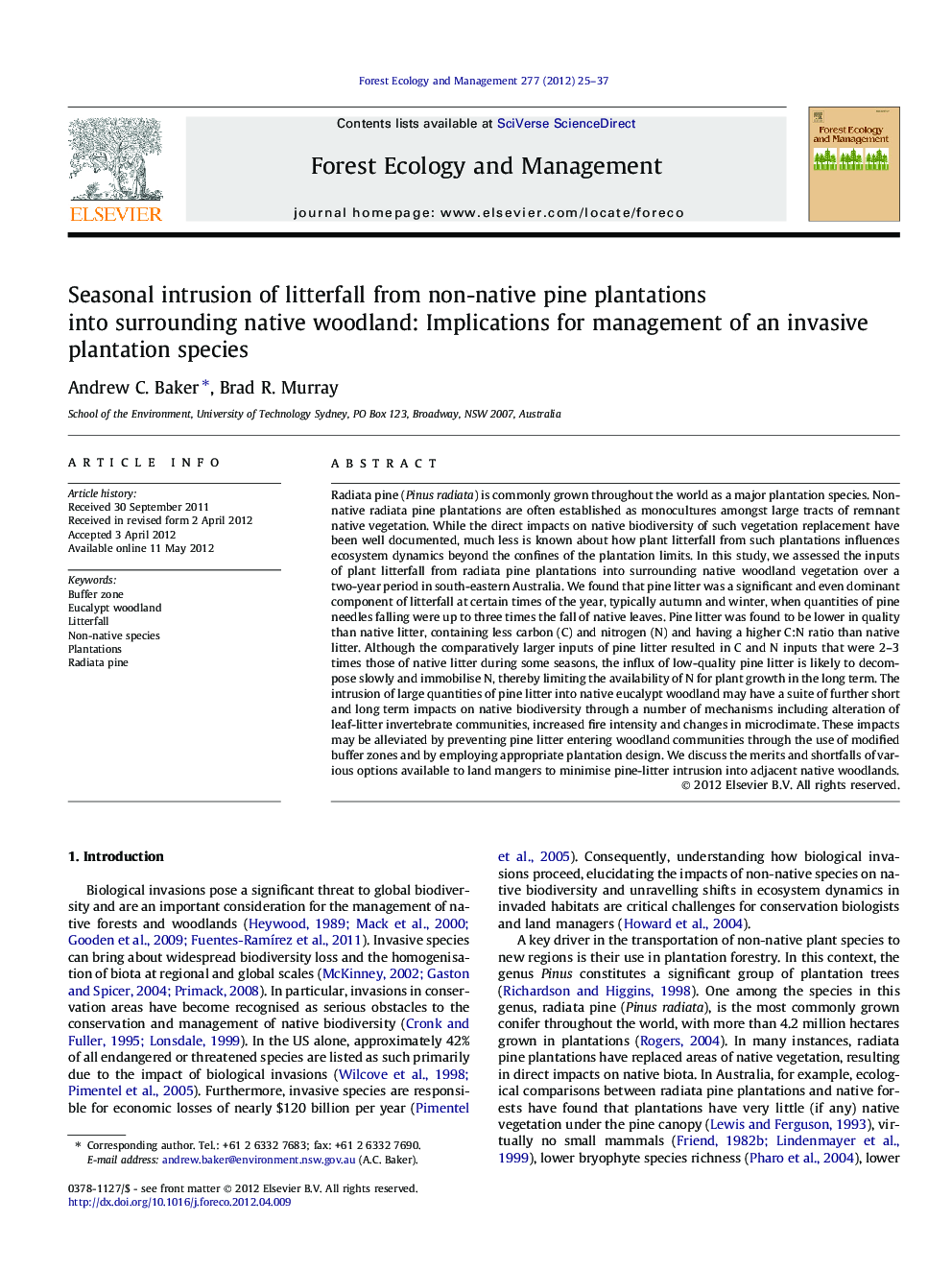| Article ID | Journal | Published Year | Pages | File Type |
|---|---|---|---|---|
| 87214 | Forest Ecology and Management | 2012 | 13 Pages |
Radiata pine (Pinus radiata) is commonly grown throughout the world as a major plantation species. Non-native radiata pine plantations are often established as monocultures amongst large tracts of remnant native vegetation. While the direct impacts on native biodiversity of such vegetation replacement have been well documented, much less is known about how plant litterfall from such plantations influences ecosystem dynamics beyond the confines of the plantation limits. In this study, we assessed the inputs of plant litterfall from radiata pine plantations into surrounding native woodland vegetation over a two-year period in south-eastern Australia. We found that pine litter was a significant and even dominant component of litterfall at certain times of the year, typically autumn and winter, when quantities of pine needles falling were up to three times the fall of native leaves. Pine litter was found to be lower in quality than native litter, containing less carbon (C) and nitrogen (N) and having a higher C:N ratio than native litter. Although the comparatively larger inputs of pine litter resulted in C and N inputs that were 2–3 times those of native litter during some seasons, the influx of low-quality pine litter is likely to decompose slowly and immobilise N, thereby limiting the availability of N for plant growth in the long term. The intrusion of large quantities of pine litter into native eucalypt woodland may have a suite of further short and long term impacts on native biodiversity through a number of mechanisms including alteration of leaf-litter invertebrate communities, increased fire intensity and changes in microclimate. These impacts may be alleviated by preventing pine litter entering woodland communities through the use of modified buffer zones and by employing appropriate plantation design. We discuss the merits and shortfalls of various options available to land mangers to minimise pine-litter intrusion into adjacent native woodlands.
► Exotic pine plantations are often established amongst tracts of native vegetation. ► We assessed the input of litterfall from pine plantations into adjacent woodland. ► Pine litter was a significant and even dominant component of litterfall. ► Pine litter may have numerous short and long term impacts on native biodiversity. ► These impacts may be alleviated through the use of modified buffer zones.
